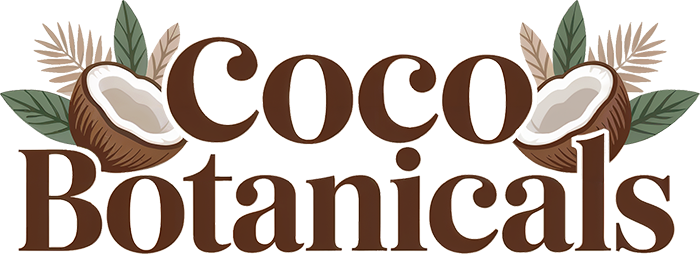The Big Island of Hawaii is a treasure trove of natural beauty, unique geological wonders, and unforgettable cultural experiences. But for many families planning a vacation, misinformation and myths can cloud expectations and even impact trip planning. At Coco Botanicals, we’re not just passionate about protecting your skin and the reef—we also care about responsible, enjoyable travel. That’s why we’re breaking down the top myths about visiting Hawaii’s Big Island, so your family can make the most of this incredible journey.
Myth 1: The Big Island is just like the other Hawaiian Islands
Each Hawaiian Island has its own personality, and the Big Island is in a league of its own. It’s the largest and youngest of the islands, roughly twice the size of all the other islands combined. This means you’ll find everything from lava deserts to lush rainforests—some within the same day of travel. Unlike Oahu or Maui, the Big Island is less commercialized and more laid-back, making it great for families looking for outdoor adventure and less crowded experiences.
Myth 2: You can see the whole island in one day
While the Big Island doesn’t have high-speed interstates, it covers over 4,000 square miles. Driving around the island’s perimeter alone takes 6-8 hours without stops. Given its diverse climates and attractions—from snow on Mauna Kea to tropical rainforests in Hilo—each area deserves proper time to explore. Plan for multiple days and focus on one part of the island at a time to make your visit enjoyable and manageable for the whole family.
Myth 3: All Hawaiian beaches are the same
On the Big Island, you’ll discover black sand beaches like Punaluʻu, green sand beaches at Papakōlea, and scenic white sand shores along the Kona and Kohala Coasts. Each offers a unique landscape and experience. Make sure your family is prepared, as amenities vary. And always bring a reef-safe, mineral-based sunscreen like Coco Botanicals Natural Sunscreen to protect Hawaii’s fragile marine ecosystems as well as your skin.
Myth 4: It’s too expensive for families
While Hawaii isn’t a budget destination, visiting the Big Island can be affordable with the right planning. Many of its top attractions—like Hawaiʻi Volcanoes National Park, Akaka Falls, and beach snorkeling—are low-cost or free. Condos and vacation rentals with kitchens can drastically cut food costs. And there’s no shortage of natural beauty to enjoy without spending a dime. Traveling during the shoulder seasons (April to mid-June or September to early December) often means lower prices and fewer crowds.
Myth 5: There’s little for kids to do
From tidepool explorations and manta ray night snorkels to visiting lava tubes and petroglyph parks, the Big Island is a giant outdoor classroom for curious kids. Don’t miss Puʻuhonua o Hōnaunau National Historical Park, where families can learn about ancient Hawaiian culture in a hands-on environment. The Panaʻewa Rainforest Zoo in Hilo is also free and particularly engaging for younger children.
Myth 6: Volcanoes mean it’s unsafe
Hawaiʻi Island is home to some of the world’s most fascinating volcanic activity, primarily in Hawaiʻi Volcanoes National Park. While eruptions do occur, local authorities and the US Geological Survey closely monitor activity to ensure public safety. Most areas are completely safe to visit and seeing an active volcano in person is an awe-inspiring sight for visitors of all ages. Just make sure to follow guidance from park rangers and plan ahead for any closures.
Myth 7: It’s always sunny and warm
Yes, the Big Island is in the tropics—but its diverse geography creates multiple microclimates. Kona is generally sunny and dry, while Hilo on the eastern side is one of the rainiest cities in the U.S. The summit of Mauna Kea is often cold and snowcapped, especially in winter. Pack layers, and make sure your family is ready for anything from sun to mist. Don’t forget that even on cloudy days, UV rays can be intense, so applying reef-safe sunscreen daily is a must.
Myth 8: Renting a car is optional
Public transportation is minimal on the Big Island, and many of the top sites are widely spread out. Renting a vehicle is essential if you want to make the most of your visit. If you’re planning on exploring areas like Mauna Kea or Saddle Road, consider a 4WD vehicle. Car rentals do sell out during peak times, so book early and plan accordingly for child seats or booster options if needed.
Myth 9: You can swim anywhere
Not all beaches on the Big Island are safe for swimming, especially during high surf or winter months. Always check local surf and current conditions. If you’re unfamiliar with ocean swimming, opt for lifeguarded beaches such as Hapuna Beach or Kahaluʻu Beach Park. These are generally safer options for families and also happen to be fantastic snorkeling spots. Remember to protect coral reefs by avoiding chemical sunscreens—Coco Botanicals offers an effective alternative that’s both family and ocean friendly.
Myth 10: Hawaii is just a beach vacation
While Hawaii boasts world-class beaches, the Big Island offers so much more. You can hike through volcanic craters, stargaze atop Mauna Kea, visit farmers’ markets filled with tropical produce, or explore ancient Hawaiian sites. This island is a living classroom for kids and adults alike, blending science, culture, and nature in ways no traditional beach resort can match.
Traveling to the Big Island is a truly enriching experience for families, full of unforgettable adventures and meaningful learning. When informed and prepared, you ensure that your journey is fun, safe, and respectful of the local environment and culture. So plan ahead, pack smart, and don’t forget your reef-safe sunscreen—your skin and Hawaii’s incredible marine life will thank you.
